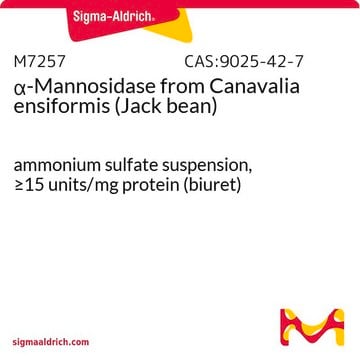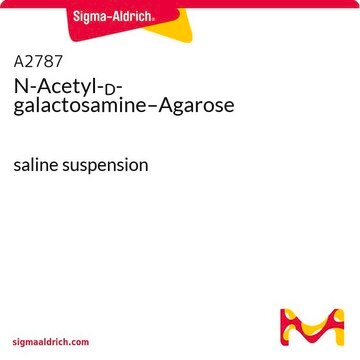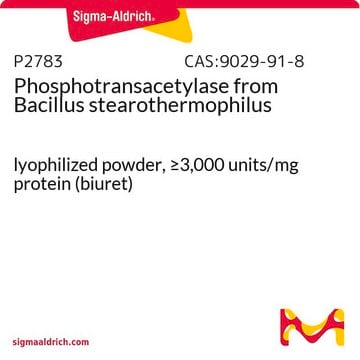A6781
Acetate Kinase from Bacillus stearothermophilus
lyophilized powder, 400-1,200 units/mg solid
Sinônimo(s):
ATP:Acetate phosphotransferase, Acetate Kinase Bacillus stearothermophilus
About This Item
Produtos recomendados
fonte biológica
bacterial (Bacillus stearothermophilus)
Nível de qualidade
Formulário
lyophilized powder
atividade específica
400-1,200 units/mg solid
temperatura de armazenamento
2-8°C
Aplicação
Ações bioquímicas/fisiológicas
Definição da unidade
forma física
Palavra indicadora
Warning
Frases de perigo
Declarações de precaução
Classificações de perigo
Met. Corr. 1
Código de classe de armazenamento
8A - Combustible corrosive hazardous materials
Classe de risco de água (WGK)
WGK 3
Ponto de fulgor (°F)
Not applicable
Ponto de fulgor (°C)
Not applicable
Escolha uma das versões mais recentes:
Já possui este produto?
Encontre a documentação dos produtos que você adquiriu recentemente na biblioteca de documentos.
Active Filters
Nossa equipe de cientistas tem experiência em todas as áreas de pesquisa, incluindo Life Sciences, ciência de materiais, síntese química, cromatografia, química analítica e muitas outras.
Entre em contato com a assistência técnica








